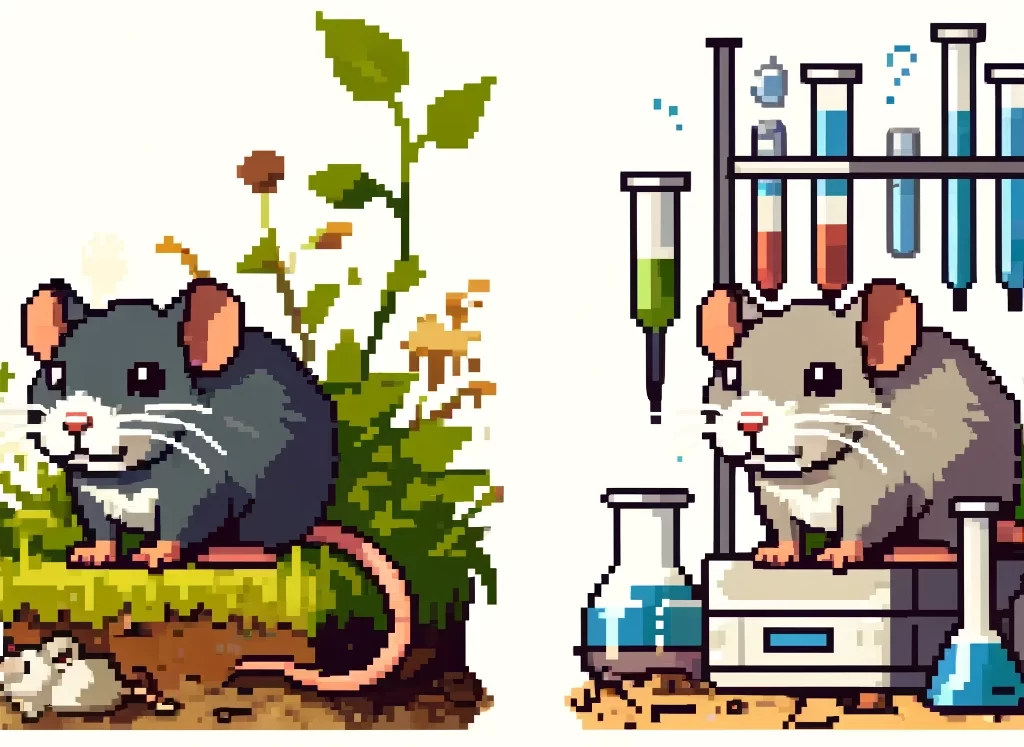
Lab Rats vs. Wild Rats: What Pet Owners Should Know
For centuries, rats have been both feared and revered, depending on the context. As pests, they invade our homes, spoil food, and spread diseases. Yet, in the controlled environment of a lab, they become invaluable contributors to scientific research. Today, we explore the fascinating journey of the Norway rat, Rattus norvegicus, from wild pest to domesticated research model, and what this means for pet owners.
The Norway Rat’s Wild Beginnings
Originating in Asia, the Norway rat is a master of adaptability. Despite its name, it likely reached Europe via Russia and then spread to the rest of the world. These rats thrive in close proximity to humans, inhabiting cities, farmlands, and even our homes. Known for their destructive behavior and disease-spreading potential, wild Norway rats have earned a notorious reputation.
Yet, behind this negative image lies a creature of remarkable resilience and versatility. Norway rats are omnivores with a ferocious appetite, capable of surviving in harsh conditions. Their reproductive rate is astonishing, with females capable of birthing several litters each year. These traits have made them both a pest control challenge and a fascinating subject for scientific study.
From Pest to Lab Hero
The domestication of the Norway rat for research began over 170 years ago. Scientists quickly realized the potential of these adaptable creatures for controlled experiments. Laboratory rats have since become central to fields like neuroscience, physiology, and toxicology. They account for nearly 14% of all animals used in research in Europe, second only to mice.
Laboratory rats differ significantly from their wild counterparts. Domestication has altered their behavior, physiology, and even genetics. These changes have made lab rats more suited to research but have also led some to question their continued value as model organisms.
Why Study Wild Rats Again?
The differences between wild and lab rats were first noted in the early 20th century. Some researchers argued that lab rats had become too domesticated, losing traits that made them valuable study subjects. This led to a renewed interest in wild rats, suggesting that studying them could “refresh” genetic lines and provide new insights into rat biology.
Wild Norway rats offer a glimpse into the natural history and evolution of the species. Understanding their behavior, habitat preferences, and disease resistance can inform better pest control strategies and enhance our knowledge of their domesticated cousins.
What This Means for Pet Owners
Pet rats, often derived from lab strains, inherit many traits from their domesticated ancestors. They are generally more docile, easier to handle, and have specific health and dietary needs. However, understanding the wild origins of these pets can provide valuable insights into their care.
Behavior: Pet rats may exhibit behaviors seen in their wild counterparts, such as burrowing, nocturnal activity, and strong social bonds. Providing an environment that caters to these instincts can improve their well-being.
Health: Wild rats are known carriers of various diseases. While pet rats are bred to be disease-free, they can still be susceptible to some conditions. Regular veterinary care and proper hygiene are crucial.
Diet: Like wild rats, pet rats are omnivores. A balanced diet of commercial rat food, supplemented with fruits, vegetables, and occasional proteins, mimics their natural dietary habits.
The Future of Rat Research
The study of both wild and domesticated rats continues to provide valuable insights. Researchers are developing new strains and methodologies to better understand these creatures. By appreciating the natural history and adaptability of rats, scientists can design more effective studies and improve animal welfare.
Let us know in the comments!
- How does knowing the wild origins of your pet rat change your perspective on its care and behavior?
- What measures can pet owners take to ensure their rats’ environment mimics natural conditions to promote well-being?
Conclusion
This research underscores the importance of pet owners understanding and respecting these animals’ complex natures. By providing environments that cater to their natural behaviors and needs, we can ensure our pet rats lead healthy, fulfilling lives.




